Proper care of any plant will always involve the proper watering schedule. But certain plants are a bit more persnickety when it comes to watering – and mother of thousands is one of them. So, instead of guessing what the plant needs, we’ll take a long drink of information on how much and when to water mother of thousands plants and what to do when we notice signs of issues pertaining to the subject of water deprivation or over-saturation in mother of thousands.
Mother of Thousands – Drought-Resistant Plants
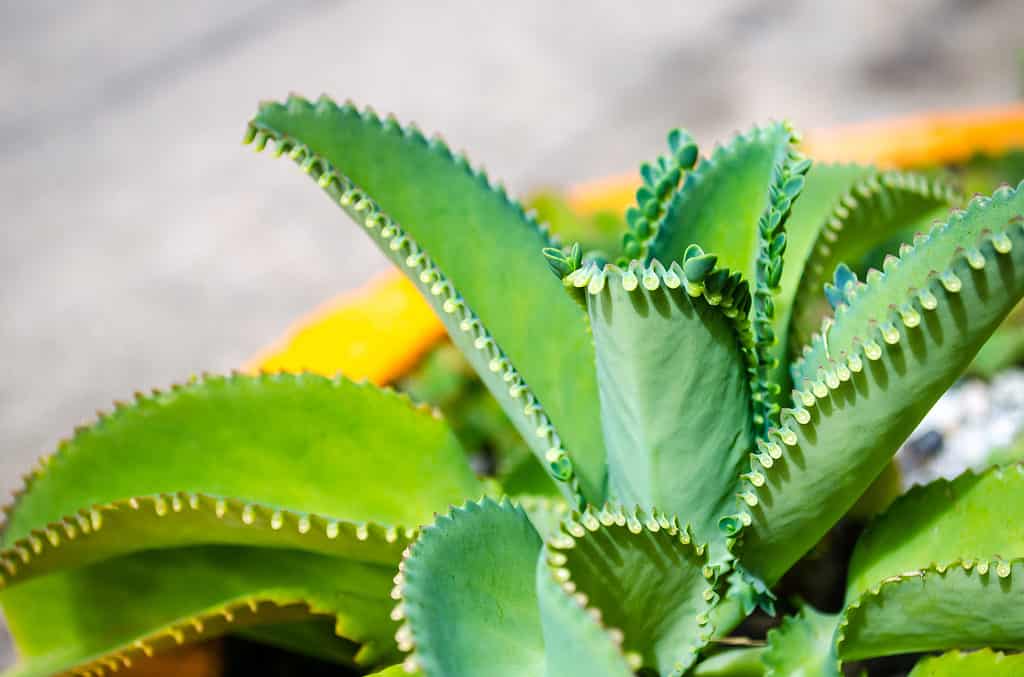
The mother of thousands plant is a unique succulent that requires special watering care.
©iStock.com/Norrabhudit
First, it’s important to understand that mother of thousands plants are drought resistant succulents. This means that it tolerates extended periods of time without water. However, this particular species isn’t as drought resistant as some other succulents that may live for months without water.
The mother of thousands plants needs water every few weeks, not months, and only when the soil is partially dry, not completely so, unless cacti and various other succulents known for their long lives without water.
To learn more about other aspects of care for your mother of thousands plants, please read our mother of thousands plant care guide, the meaning of mother of thousands plants, and ideas and tips for using your mother of thousands plant as a hanging plant.
Methodology for Watering Your Mother of Thousands Plant
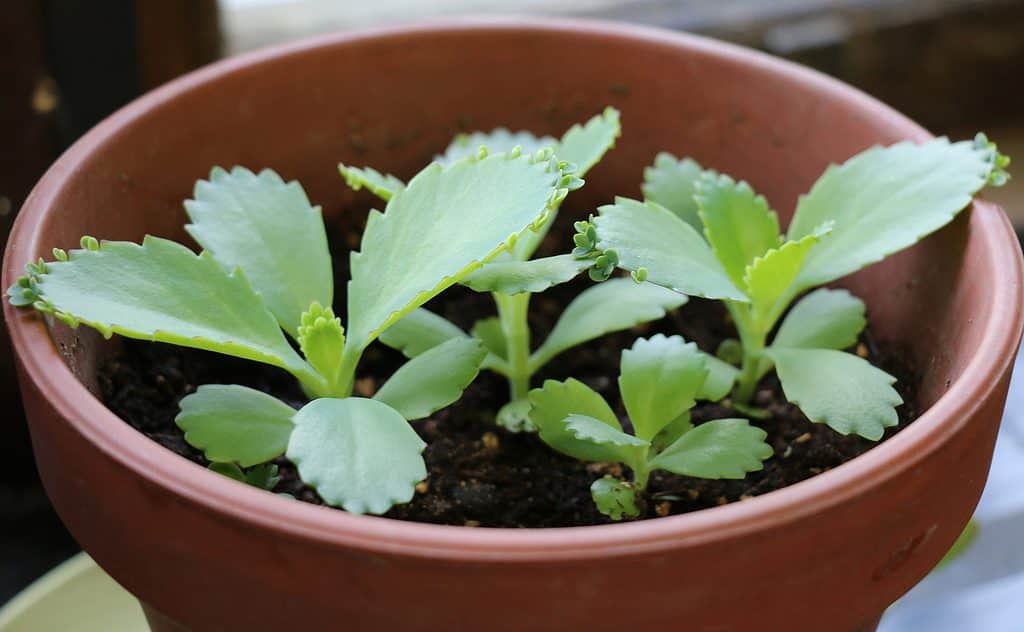
Carefully water the mother of thousands according to season and location.
©lqlqlqlq75 / Pixabay – License
There are several different ways to properly water your mother of thousands plant. The primary thing is making sure that it is only the soil that is watered and not the leaves or stem. The leaves and stem are prone to rotting when they get wet.
Tip 1 – Imitate the Native Rain Environment
The best way to water your mother of thousands is by imitating its natural environs. The plant is native to arid terrain in Madagascar, so when it does receive water, it’s through a heavy downpour that drenches the plant thoroughly.
To imitate this, pour water directly into the soil of the plant. Keep pouring into the pot until the water starts to drain from the drainage holes.
Tip 2 – Use Tray Watering
One of the best ways to ensure your mother of thousands plant receives water properly is by doing tray watering. That is, place the pot into a tray that will hold water. Water the plant and once the plant has “dumped” its excess water from the soil through those drainage holes, empty the tray and return it under the plant. The plant will either absorb the water as needed or continue to dump the water out of the drainage holes. This helps to prevent root rot.
Tip 3 – Water in the Morning
When you water your mother of thousands, do so in the morning hours before the heat of the day hits it. This will help to make sure the plant actually receives the water instead of the sun drying it out. Watering the plant in the morning also helps to prevent fungal infections which may be brought on during evening watering times.
How Often Should I Water My Mother of Thousands Plant?
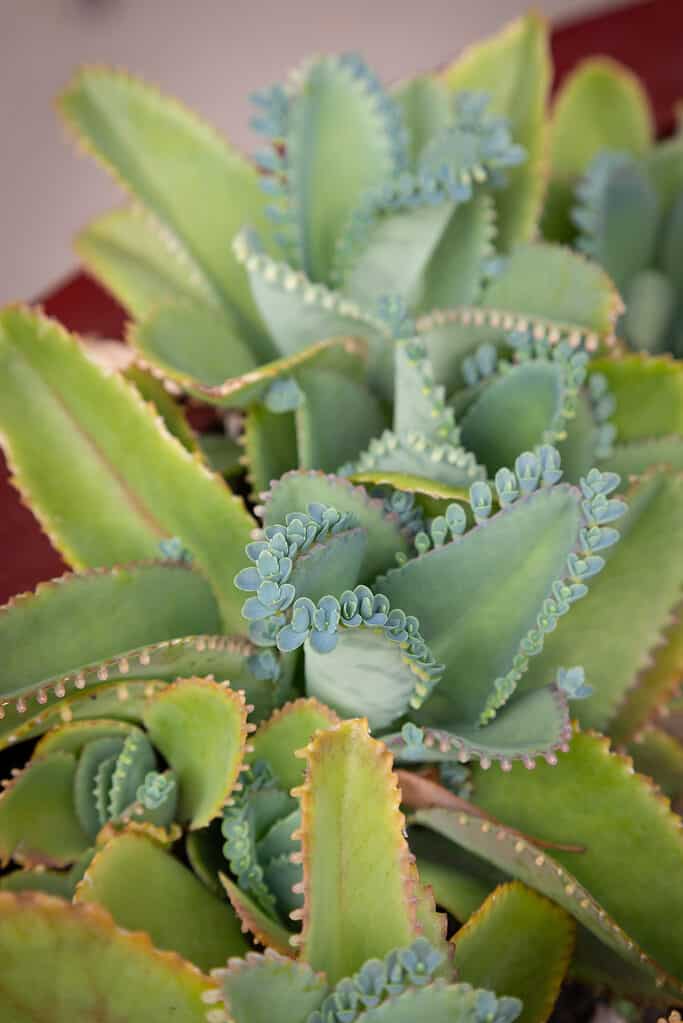
Mother of thousands plant should be bright green or dusky blue-gray-green.
©iStock.com/Athichai Chaweesook
The season will determine how often you should water your mother of thousands plant, as well as placement, size, and other factors. There’s no real set timeline for watering the plant, so you may want to use a moisture meter for the soil to test and set a reminder on your phone to check every week, just to keep the plant’s care on your mind.
In the spring, summer, and autumn – i.e., growing season – the mother of thousands plant usually wants to be watered about every 2 to 3 weeks. Check the soil and verify that the top couple of inches are dry before watering, though.
In the winter, the mother of thousands usually needs to be watered every 3 to 4 weeks instead, depending on the climate and placement of the plant.
It should be noted that indoors versus outdoors mother of thousands plants will require different frequencies for watering.
Frequency: Watering Indoor Mother of Thousands Plants
If you’re raising your mother of thousands plant indoors, the plant will retain water longer those kept outdoors. Check the moisture levels every 10 days or so, to verify the plant isn’t drying out too much between waterings. Most likely, you’ll be watering the plant every 3 weeks in hotter months and 4 weeks in cooler months.
Frequency: Watering Outdoor Mother of Thousands Plants
Outdoor mother of thousands need watering more often because of the elements, heat of the sun, and wind exposure. Check the moisture levels of the soil about every 7 days, just to make sure it hasn’t dried out completely. Most likely, you’ll be watering every 2 weeks in the hotter months and every 3 weeks in cooler months.
What Kind of Water Should I Use for Mother of Thousands?

The right water can make all the difference in the health of your plant.
©iStock.com/Tgordievskaya
Technically, you can use any type of water for your mother of thousands plant. However, some types are better than others.
- Tap water works, but it’s best if you purify it with a water filter first.
- If you do use tap water, the calcium and magnesium from the water will likely leave markings on the plant’s leaves and effect the long-term health of the plant. Boil the water and let it cool completely before filtering and watering your plant.
- Rainwater is best and most easily absorbed by the plant. Collect with a rain barrel.
- Soft water is a bad choice. This will gradually destroy the plant.
- Salty water will also damage and eventually kill your mother of thousands plant.
- Distilled water is the second best choice, though it will lack the nutrients of the rainwater.
Does the Water Temperature Really Matter?
You should never water your mother of thousands plant with warm or cold water. Room temperature is the only thing that won’t damage the roots of the plant.
Should I Mist My Mother of Thousands Plant?
The leaves, stem, and branches of your mother of thousands plant should not get wet. They are arid plants, not high humidity plants, so misting them could cause damage and eventually destroy the plant’s health.
Signs of Over Watering in Mother of Thousands
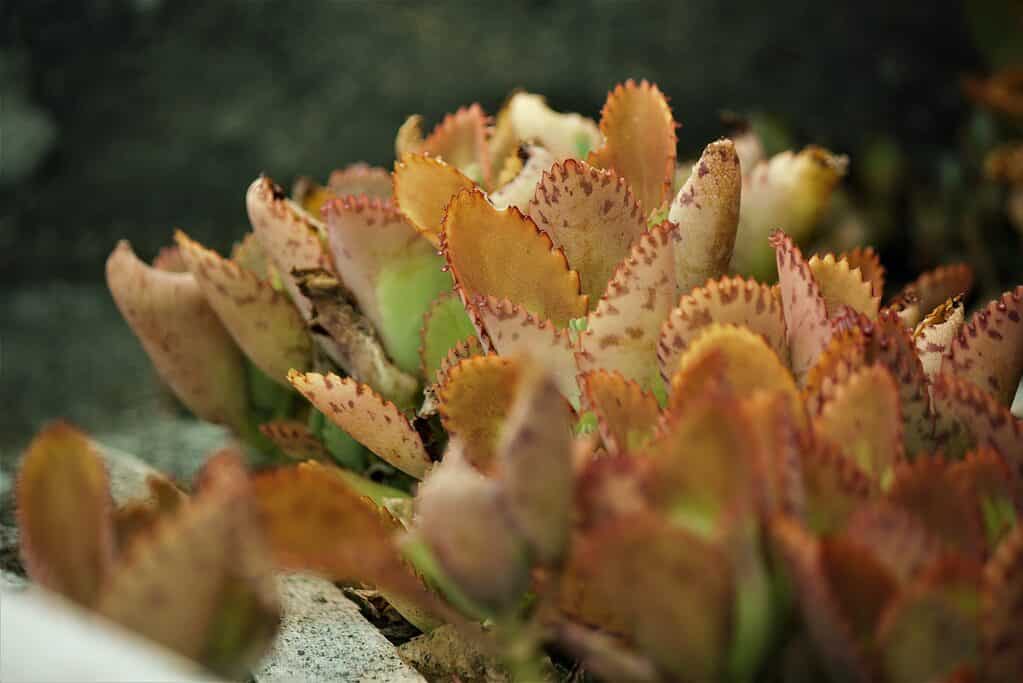
Discoloration is usually a sign of over watering.
©
Over watering is one of the most common issues for mother of thousands plants. If you notice any of the following signs, you are likely watering your plant too often.
- Wilting leaves
- Soft leaves
- Discoloration (brown, yellow, black)
- Heavy, drooping leaves
Signs of Dehydration in Mother of Thousands
Dehydrating your mother of thousands plant is much harder to manage than over watering. If, however, you tend to forget about the plant for long stretches of time, you may notice:
- Dry, stiff soil
- Withered leaves, stems, or branches
- Loss of plantlets
How to Deal With Problems Caused by Improper Hydration in Mother of Thousands
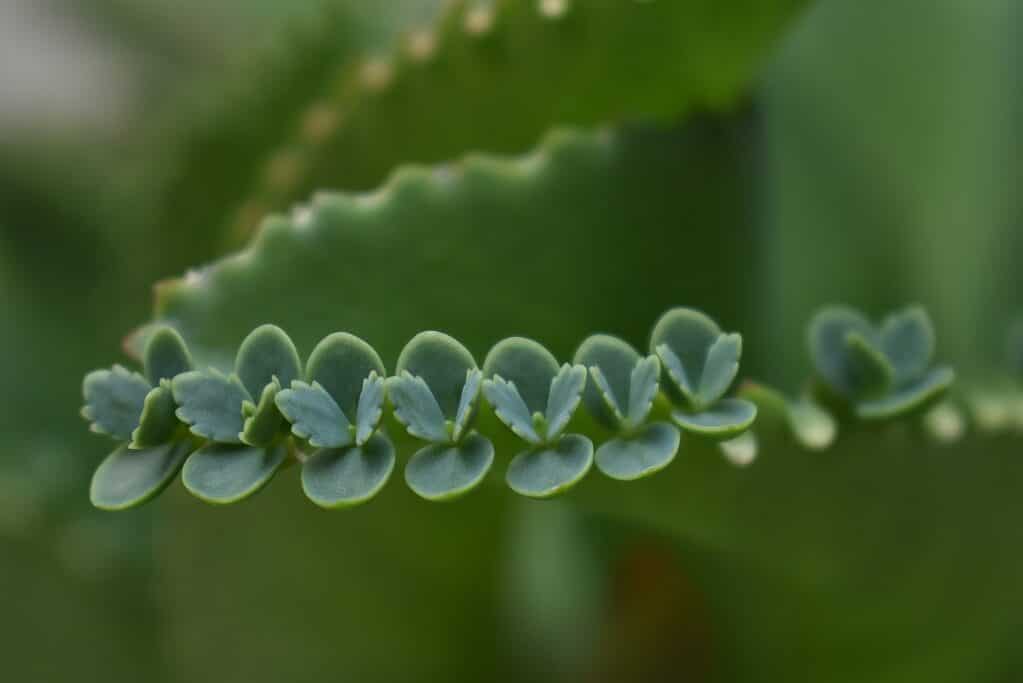
The healthy plant will have vivid green plantlets like these growing all along the edges of the leaves.
©
Dehydration
If you do happen to dehydrate your mother of thousands plant, reintroduce water to the plant through a heavy watering until the water drains from the drainage holes. Repeat as needed if the soil remains dry but avoid overcompensating by waiting several days to water again if the soil is still somewhat dry.
Improper Soil Drainage
One of the biggest causes for oversaturation of mother of thousands is improperly draining soil. If you discover this is an issue:
Choose a terra cotta or clay pot with proper drainage holes.
Be sure the soil mixture you use is designed for succulents or cacti. Make your own with 2 parts sand, 2 parts soil, and 1 part pumice or petite, if need be.
Re-pot the mother of thousands plant into the new pot with gravel or pebbles at the bottom of the pot and only lightly compacted soil in the pot. Avoid any plastic liners or inserts in the pot.
Build-up of Minerals
If the plant develops mineral deposits (usually from tap water or salty soft water), you’ll need to gently scrape away the deposits by hand. Or you may then use a tablespoon of vinegar mixed with distilled water on a cotton ball and wash away the residue and all visible stains from the plant.
Overwatering
The most common issue, as we noted, is over watering. The solution for this is:
- Verify the pot has proper drainage holes and no blockages.
- Reduce watering frequency.
- Remove the plant from the soil, clean away the oversaturated soil from the roots, and re-pot in a clean, sterilized, dry clay pot with proper drainage and brand new potting medium. Cut away any oversaturated or moldy roots.
The photo featured at the top of this post is © iStock.com/Norrabhudit
Thank you for reading! Have some feedback for us? Contact the AZ Animals editorial team.






